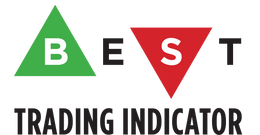When you trade stocks on a brokerage platform, you have various stock order types at your disposal.
Some orders are executed right away, while others depend on specific prices or times. It's crucial to understand the most common stock orders and use them effectively.
This beginner's guide covers the basics of order types, helping you confidently place trades and choose the right order for your needs.
We'll go over the primary trading orders and explore how day traders use them to enhance their risk management strategies and trading efficiency.
Stock Orders Explained
If you've traded stocks before, you might be familiar with different stock order types.
In financial markets, an order is a trader's instruction to a stockbroker or trading platform to buy or sell a specific security, like stock, at a certain price or price range.
When placing a stock trade, you can set conditions for your broker to execute the order, including time limitations and price restrictions.
Key Order Types: Limit, Market, and Stop
Traders can choose from a variety of order types to make trades. The three main stock orders are:
- Limit order: A limit order is a request to buy or sell a stock at a specific price. Traders set a price at or above the current market price when selling and at or below the market price when buying. For example, if you want to buy Apple stock at $110 a share and it's currently trading at $120, the broker waits to purchase the shares until the price meets your limit.
- Market Order: A market order is a request to buy or sell a stock at the current market price. This order is valid only for the day and usually results in the immediate purchase or sale of all shares, provided market conditions allow and the stock is actively traded. It's the most basic stock order type, guaranteeing quick execution but not a specific price.
- Stop (stop-loss): A stop order, or stop-loss order, is a request to buy or sell a stock once it reaches a specified price (the stop price). Once the stop price is reached, the stop order becomes a market order. Learning to set up stop orders is crucial for most stock traders to prevent significant losses when prices move unexpectedly.
Why Different Order Types Exist
Brokerages offer various order types to provide traders flexibility, help them tailor their trades, and manage risk. Using the right order type can ensure trades are executed at the desired price and in a timely manner, maximizing returns in the stock market.
Using Orders for Different Situations
The order type a trader uses can greatly impact the price they pay and the profits they make. Each order type is a tool suited for a specific purpose. Identifying your main goal, whether controlling the trade price or having your order filled quickly at the market price, helps determine the most suitable order type.
Practicing Order Entries with a Simulator
Before trading stocks with real money, it's important to practice order entries in a simulator or paper-trading platform. Modern simulators provided by brokerage firms resemble real trading platforms. Open a demo account, choose a stock, place limit, market, and stop orders, and observe the results. Execute at least 50 trades in a simulator to understand order entry mechanics before trading live.

